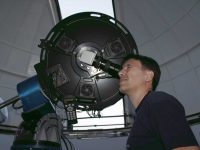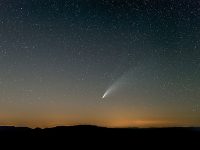
The ill-fated year 2020 ended with a surprising piece of news: the possible detection by the Breakthrough Listen project of an artificial signal coming from Proxima Centauri – the closest star to the Solar System, no less.
Looking beyond the headline, using the Parkes radio telescope in Australia, the project detected a narrow-band signal centred on the 982 MHz frequency coming from a 16 arcminute environment around Proxima Centauri, which includes… several dozen other stars. However, the signal itself (dubbed BLC1-Breakthrough Listen Candidate 1) was extremely interesting because of its narrow bandwidth and frequency.
Natural radio signals are predominantly broadband, i.e., they can be found at any position on your radio dial. For example, if you are listening to the radio (especially AM broadcasting) during a thunderstorm, you will notice that each flash of lightning produces the typical static noise in your speaker, regardless of which station you are listening to: the radio signal from the lightning permeates the entire dial. The same is true for signals produced by northern lights, pulsars, solar storms, etc. In contrast, the artificial signals used for communications are narrowband, because this makes it possible to place different communication channels in the same area of the electromagnetic spectrum without mixing them, as well as to minimise the energy consumption needed to generate them. Thus, one radio station can be heard in Valencia on the 774 kHz frequency, but not on 769 or 779 kHz (the bandwidth is about ±5 kHz). This does not mean that there are no narrowband radio signals in nature. On the contrary, an excited molecule or atom can emit such a signal when de-excited and will do so at a frequency corresponding to the excitation energy. Thus, in comets, we can measure the 1,420 MHz narrow-band emission due to the de-excitation of the hydrogen atoms in their tails. But the frequency of the BLC1 signal does not match the natural emission of any atom or molecule that abounds in space, nor does it match the emission band of our artificial satellites or spacecraft, which makes it very promising. In addition, the signal shows a frequency shift similar to that expected from the Doppler effect of a rotating emitter (e.g., an artificial satellite orbiting a Proxima Centauri planet).
Unfortunately, there was no indication of structure or modulation in the signal, no evidence that it carried any information, nor has it been found again in subsequent observations. If it really was an emitting satellite on a planet in Proxima Centauri, it would make little sense that it would have been switched off after detection. It is thus reminiscent of the famous Wow! signal, a powerful narrow-band signal detected in 1977 for several minutes by the Big Ear radio telescope that was never detected again. Its frequency shift is similar to that of another famous signal, SHGb02+14a, detected in 2003, found three times by the recently defunct Arecibo Observatory, but so faint that it may have been a fluctuation of background noise. Along with these two signals, BLC1 seems destined to join the list of promising but mysterious and unconfirmed SETI (Search for Extraterrestrial Intelligence) candidates.
One of the problems with many SETI projects is that they should ideally be carried out at the same time from two distant radio telescopes, in order to be able to rule out that a signal is contamination from a local source, as might be the case here. But if it is hard enough to ask for observing time for SETI work on one radio telescope, imagine asking for two radio telescopes at the same time.




